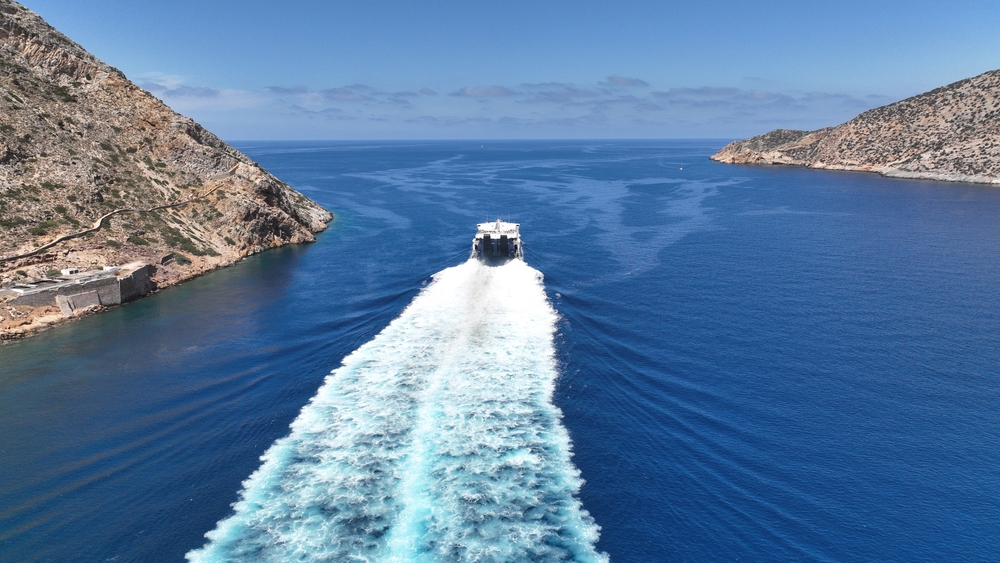
For centuries, the vast, open sea has ignited humanity’s imagination. The call of the ocean—its mystery, beauty, and boundless horizon—has inspired explorers, adventurers, and travelers alike to embark on some of history’s most iconic voyages.
These journeys, whether driven by curiosity, conquest, or comfort, have played a crucial role in shaping not only our understanding of the world but the very concept of travel itself.
What began as daring expeditions into the unknown has evolved into the modern cruising experience we know and love today: luxurious ships, curated experiences, and effortless exploration. But before there were sun decks and midnight buffets, there were wooden caravels braving uncharted waters and steamships racing across the Atlantic.
In this post, we’re setting sail through time to revisit some of the most legendary ships and their defining voyages. These vessels didn’t just change the course of maritime history—they laid the groundwork for today’s cruising culture. Whether you’re a seasoned cruiser or a first-time traveler, join us as we dive into the epic tales that still echo across the oceans.
The Age of Discovery: Setting Sail into the Unknown
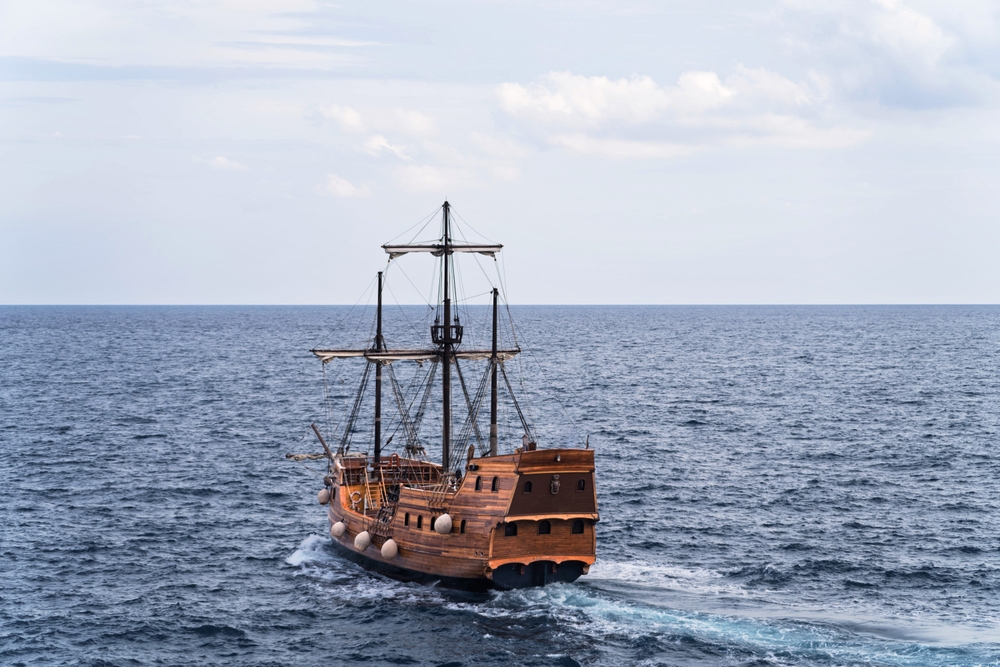
Long before cruise ships offered poolside mojitos and Caribbean itineraries, seafaring vessels were the vehicles of exploration, ambition, and bold discovery. The Age of Discovery, spanning the 15th to 17th centuries, marked a turning point in world history—one where ships quite literally changed the map.
Arguably the most iconic voyage of this era was that of the Santa Maria, the flagship of Christopher Columbus's 1492 expedition across the Atlantic. Sponsored by the Spanish crown, the Santa Maria, along with the Pinta and Niña, set out in search of a new route to Asia but instead stumbled upon the Americas. Though Columbus’s legacy is complex, the voyage itself reshaped global trade, exploration, and cultural exchange, ushering in a new era of sea travel.
Another pivotal ship was the HMS Endeavour, captained by James Cook in the late 1700s. Cook’s voyage took him to the shores of Australia and deep into the Pacific, mapping lands previously unknown to Europeans. His meticulous charts and respectful approach to exploration earned him a revered place in maritime history.
These early expeditions not only demonstrated the potential of oceanic travel but laid the foundation for the global cruise routes we navigate today. They remind us that the spirit of discovery is still alive every time a ship leaves port.
The Rise of Transatlantic Passenger Travel
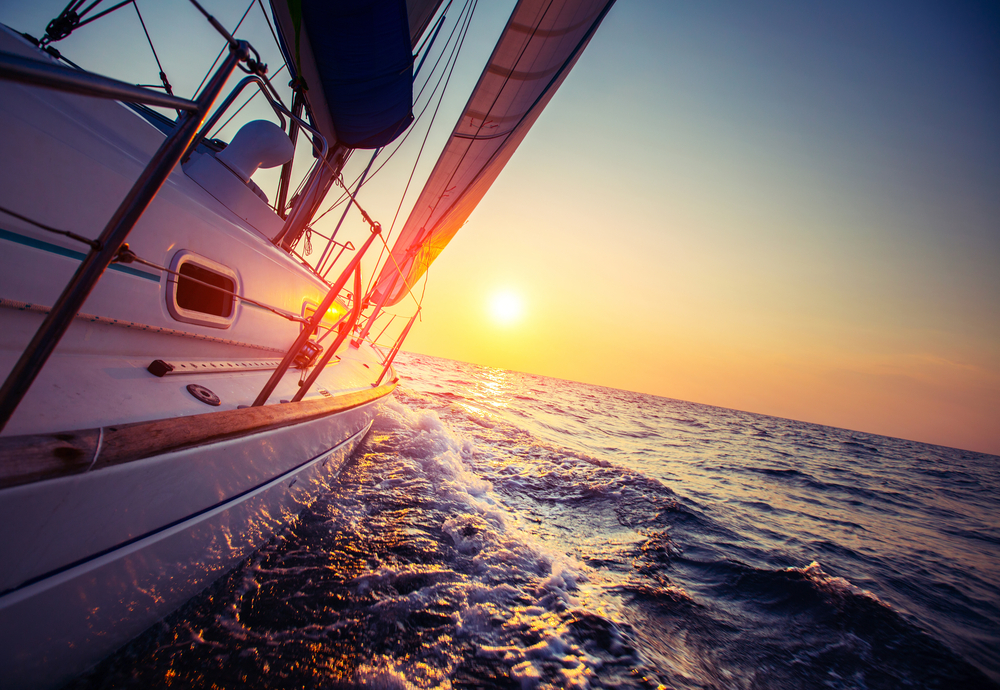
As the 19th century unfolded, a new chapter in maritime history began: the era of transatlantic passenger travel. With the industrial revolution fueling innovation, ships evolved from traditional wooden sailing vessels to robust ironclads powered by steam. This transformation didn't just change how ships were built—it revolutionized how people traveled across the seas.
At the forefront of this new era was the RMS Britannia, launched in 1840 by the newly formed Cunard Line. As the first official transatlantic passenger cruise ship, the Britannia sailed from Liverpool to Halifax and Boston in just over 14 days—a remarkable feat at the time. Onboard amenities were modest by today’s standards, but they marked the beginnings of comfort at sea: simple cabins, hot meals, and scheduled service offered passengers an unprecedented level of convenience and predictability.
Speed, safety, and style quickly became the pillars of successful transatlantic travel. The Britannia and her sister ships helped lay the groundwork for a passenger cruise industry, proving that ocean travel could be more than just a means of migration or business—it could be an experience in itself.
As the 1800s progressed, these early crossings inspired a new level of sophistication, eventually setting the stage for the glamorous ocean liners that would define the early 20th century.
Golden Age of Ocean Liners (Early 20th Century)
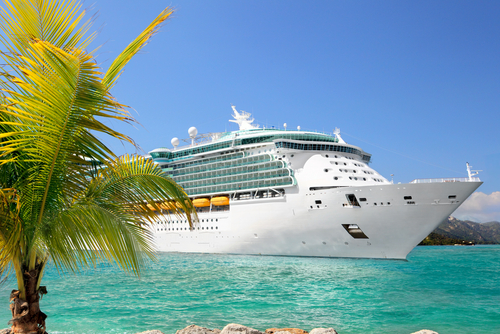
The early 20th century ushered in the Golden Age of Ocean Liners, a period defined by fierce competition between shipping companies, technological advancements, and an insatiable appetite for grandeur. During this era, ships weren’t just modes of transport—they were floating palaces, symbols of national pride, and stages for some of the most dramatic stories in maritime history.
No ship embodies this age quite like the RMS Titanic. Launched in 1912 by the White Star Line, the Titanic was hailed as the most luxurious and “unsinkable” ship of its time. Its fateful maiden voyage from Southampton to New York, however, ended in one of the most infamous maritime disasters. The tragedy not only captured global attention but also sparked sweeping reforms in safety regulations, including mandatory lifeboat drills and 24-hour radio watch.
The RMS Lusitania, another iconic vessel of the era, combined passenger luxury with wartime service. When it was torpedoed by a German U-boat in 1915, its sinking became a turning point in World War I, stirring public opinion and emphasizing the vulnerability of civilian ships during conflict.
Then came the RMS Queen Mary, launched in 1936 by the Cunard Line. With art deco interiors, lavish ballrooms, and unmatched speed, the Queen Mary was the epitome of pre-war luxury. She later served as a troopship in World War II, earning the nickname “The Grey Ghost” for her stealth and speed. After the war, she returned to her glamorous roots, embodying the transition from necessity to indulgence in sea travel.
These vessels represented more than transportation—they were cultural icons, engineering marvels, and stepping stones toward the pleasure cruises we enjoy today.
The Birth of Modern Cruising (1950s–1970s)
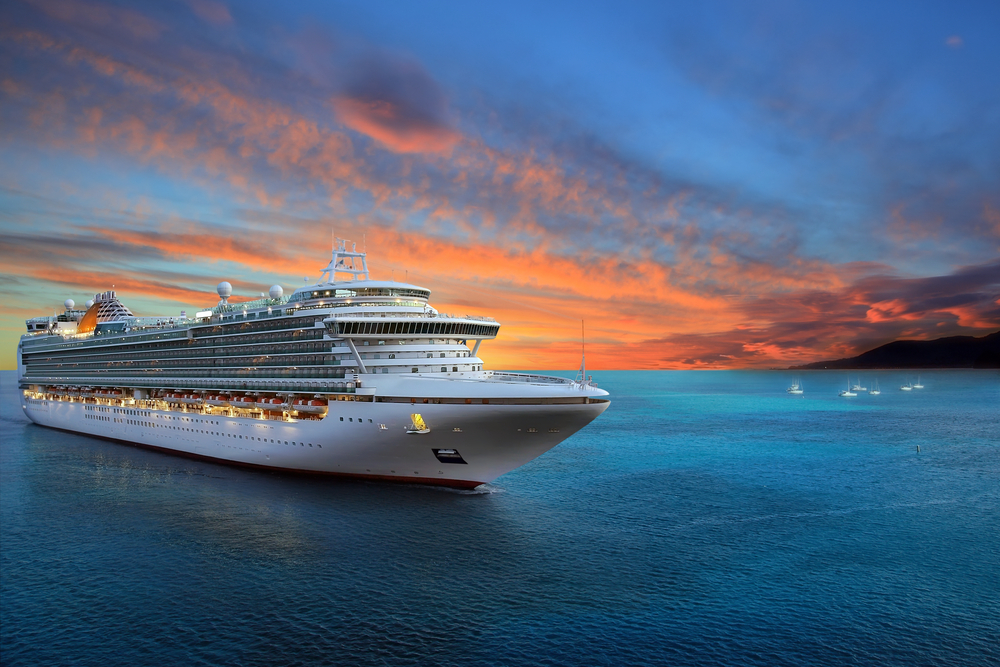
By the mid-20th century, the golden age of ocean liners began to fade as commercial air travel took flight. What once was the only way to cross oceans quickly became a nostalgic novelty. But rather than signal the end of ocean travel, this shift sparked the birth of modern cruising—a transformation from transportation to vacation.
Enter the SS United States, launched in 1952. With sleek lines and record-breaking speed, she was an engineering marvel and a symbol of American innovation. The SS United States still holds the Blue Riband for the fastest transatlantic crossing, achieving nearly 44 knots. Although her heyday was brief, she embodied both elegance and cutting-edge power, bridging the gap between traditional liners and the cruising experience to come.
In the 1970s, the MS Angelina Lauro played a pivotal role in redefining sea travel for leisure. Originally built as a transatlantic liner, she was repurposed for Caribbean cruises, offering passengers sunny escapes, fine dining, and onboard entertainment. She helped shift cruising into a relaxed, vacation-focused model—one where the destination was only part of the appeal.
This era marked the dawn of “cruising for fun.” As cruising became a getaway rather than a necessity, it opened the door to the mega-cruise phenomenon just around the corner.
The Mega-Ship Era and Technological Innovation (1980s–2000)
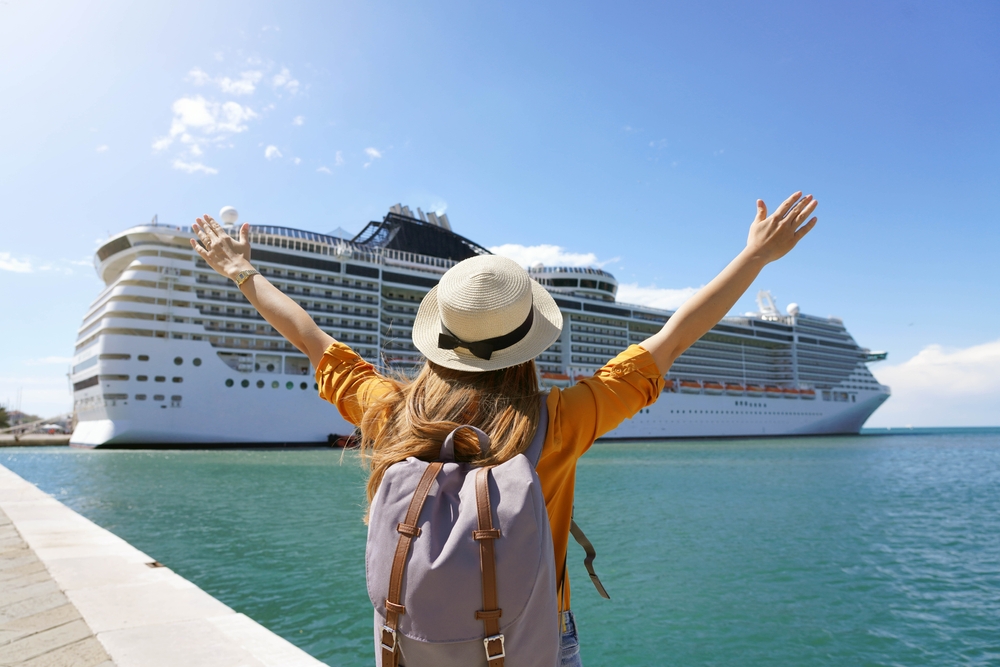
By the 1980s, cruising had entered a bold new era—bigger, bolder, and brimming with innovation. Ships were no longer just floating hotels; they became full-scale resorts at sea. With soaring atriums, lavish theaters, shopping promenades, and endless dining options, cruising evolved into a mainstream, family-friendly vacation model accessible to millions.
A major milestone came with Royal Caribbean’s Sovereign of the Seas, launched in 1988. Often considered the first true “mega ship,” Sovereign introduced many features that have become standard today: glass elevators, multi-story atriums, and expansive onboard amenities. It was a game-changer—ushering in a design philosophy that emphasized space, entertainment, and a resort-style experience on the open water.
Then came Carnival Destiny in 1996, the first passenger cruise ship to exceed 100,000 gross tons. With its vibrant atmosphere, sprawling pool decks, and broad appeal, Destiny reflected a major cultural shift in cruising: from a somewhat elite experience to a fun, accessible adventure for everyone. Carnival's “Fun Ship” branding resonated with families, couples, and groups alike, helping to grow cruising into a major force in global tourism.
These mega ships didn't just carry more people—they redefined what a cruise could be. Technological advancements allowed for smoother sailing, more eco-friendly operations, and new itineraries to previously unreachable destinations. What started as a way to cross oceans had now become a way to explore the world in comfort and style.
By the turn of the millennium, the cruise industry had transformed completely, blending the thrill of exploration with the ease of all-inclusive travel. And from that point forward, there was no turning back.
Honorable Mentions & Legendary Journeys
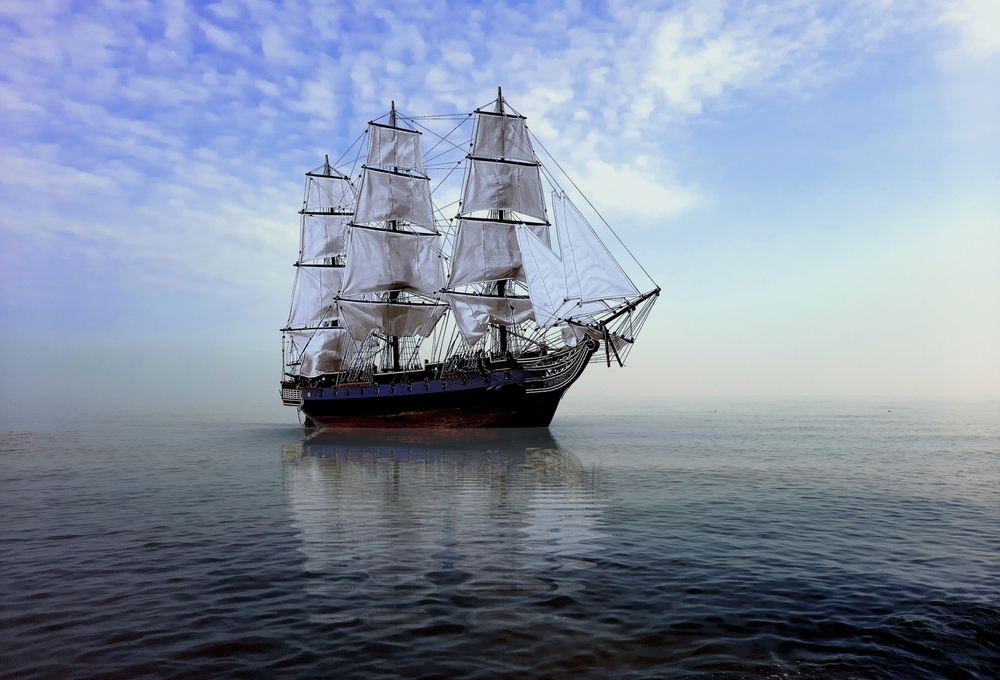
While some ships dominate the spotlight, many others have left an indelible mark on cruise history through their design, service, or unforgettable stories.
The QE2—Queen Elizabeth 2—was more than a luxury liner. Launched in 1969, she carried royalty, celebrities, and everyday adventurers across the Atlantic, and even served as a troopship during the Falklands War. A true blend of elegance and resilience, the QE2 represented the last great ocean liner before the cruise era fully took over.
Then there’s the SS Normandie, a French art deco marvel from the 1930s. Known for its exquisite design and unrivaled luxury, it was one of the most stylish ships ever built. Though its career was short-lived, the Normandie set new standards for maritime architecture and aesthetics.
On the more somber end of the spectrum is the MV Wilhelm Gustloff, a German ship sunk during World War II in one of the deadliest maritime disasters in history. Though often forgotten, its tragic story is a reminder of how deeply intertwined ships can be with the tides of history.
These ships—and the people aboard them—tell stories of heroism, ambition, innovation, and sometimes heartbreak. They’re more than steel and rivets; they are floating time capsules of human experience.
Echoes of the Past in Today’s Cruises
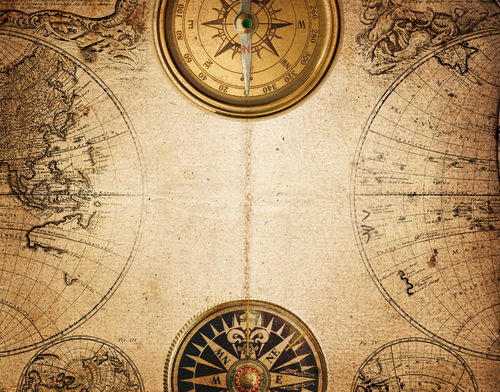
From wooden caravels of discovery to massive floating resorts, the journey of cruising has been one of transformation and wonder. The ships we sail today are built on centuries of innovation, exploration, and storytelling—each modern voyage echoing those that came before.
Many of today’s cruise ships pay tribute to their legendary predecessors, whether through names, design nods, or the timeless tradition of adventure at sea. The spirit of the Titanic, the ambition of the Queen Mary, and the innovation of the Sovereign of the Seas live on in every ocean crossing and island-hopping itinerary.
At CruiseDirect, we believe that every journey should be as memorable as the great voyages of history. Whether you're sailing to the Caribbean, exploring the Mediterranean, or embarking on a transatlantic adventure, you're continuing a legacy that spans centuries.
So why not make your own mark on cruise history? Explore our latest deals and start planning a voyage worthy of the legends.


